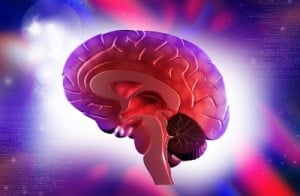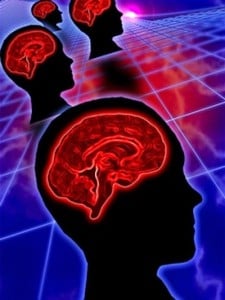Over the past nearly 20 years, I have worked successfully with children, adolescents, and adults with anxiety disorders using neurofeedback. There are times when anxiety is secondary to a learning or social problem. If a person has a problem with their brain, they cannot trust their brain function and conclusions, which is very anxiety provoking. This is especially true if these challenges have been happening for a long time. In this case, it is necessary to address the neurological underpinnings of the learning problems as well as the anxiety.
It is also possible that anxiety is related to repeated attempts at social interaction that resulted in rejection. In this case, the problems that need to be addressed with neurofeedback include anxiety itself as well as social competence.
Anxiety can be the result of a language-based learning disability where the person may have difficulty either understanding what people are saying or forming a response. In either case, language is not working as an effective communication vehicle resulting in anxiety. Of course, in this case, we address the language and/or auditory processing challenges.
Anxiety can have it’s own life in the brain. It can show up as problems in the midline of the brain, somewhere from the middle of the forehead to the middle of the back of the head. This is over the cingulate gyrus, which, when not working properly, can result in anxiety and Obsessive Compulsive Disorder. We see these problems on our brain maps and address them with neurofeedback.
There are times when anxiety appears as over suppression, meaning the brain waves are too small in the prefrontal region, the forehead. This is associated with a style of hyper vigilance and is seen in anxiety in addition to Post Traumatic Stress Disorder. This is related to a person never feeling quite safe. Teaching the brain to increase the size of these brain waves is very helpful in relieving the distress of anxiety.
Feelings of anxiety can also be related to the orbital frontal portion of the cingulate gyrus. This is the portion of the brain that is responsible for scanning the universe to see if everything is okay. If not, the person feels either anxious and/or the need to “fix it”, leading to repetitive behaviors such as those seen in Obsessive Compulsive Disorder.
People on the autistic spectrum are typically very anxious. This anxiety can show up on our brain maps over the cingulate gyrus or can show up as very large slow brain waves, especially in the front of the brain. This problem is associated with a lack of frontal lobe controls including emotional control and state control. It is also true that if a person is on the autistic spectrum, the world is very bewildering. I can remember working with a child who used to climb up on the garage roof, having no idea that it was dangerous. He also thought he could walk through walls and could not understand that this did not work. You can imagine how anxiety provoking it is for a person with autism to try to figure out the day-to-day and moment-to-moment demands and expectations placed on him or her. With neurofeedback, we can address the frontal lobe control issues, the cingulate gyrus if it is an issue, and challenges reading social cues. Strengthening frontal lobes increases emotional control, frustration tolerance and cause and effect thinking.
It can also be very upsetting and therefore anxiety provoking to have no language or insufficient language to either understand or communicate ones needs effectively. Frustration, explosiveness, apparent lack of cooperation, and agitation can result. Neurofeedback is wonderful at helping improve vocabulary, language expression, comprehension, and social pragmatics. Combine this with targeting the anxiety itself helps to establish a calmer demeanor.
 Many challenges are stress activated or stress enhanced. These include slow processing speed, attention, focus, Tourette’s and tick behaviors, obsessive-compulsive behaviors, and anxiety disorders. Strengthening the brain and the brain’s ability to control it’s own state strengthens stress resilience. This in itself reduces the effect of these types of challenges.
Many challenges are stress activated or stress enhanced. These include slow processing speed, attention, focus, Tourette’s and tick behaviors, obsessive-compulsive behaviors, and anxiety disorders. Strengthening the brain and the brain’s ability to control it’s own state strengthens stress resilience. This in itself reduces the effect of these types of challenges.Anxiety can also manifest itself in the brain in the right central area, about three to four inches above the right ear. This is on the sensory motor strip, and area that goes from ear to ear like a headband. This location is where information goes from the brain to the body and from the body to the brain. The right side of the brain is related to self-soothing and self-calming. If this particular area is not working effectively, the signals from the body are danger, agitation, and over arousal. This is particularly important if the problem manifests itself in the alpha wave band, which is a meditative, calming brain wave.
Improving anxiety improves not just the comfort and quality of life but enhances many cognitive functions as well such as memory, attention, focus, word finding, and processing speed. Anxiety can create a 'brain freeze' feeling, where a person has trouble accessing their good brain. How many people have been in front of a group and couldn’t think what they were going to say or raised their hand in class and lost the answer they were so eager to share. This is the result of anxiety.
A young man, age 17, just beginning his senior year of high school, came to my office for help with his anxiety. He had spent the summer traveling internationally and came home terribly anxious. His mother, who was hoping to avoid medication, brought him to see me. By the time he completed neurofeedback, his anxiety was completely under control and it has not returned.
 A high school freshman came in for help with his anxiety. As a child he had been diagnosed with Pervasive Developmental Delay, Not Otherwise Specified, also known as PDD, NOS, which is an autistic spectrum disorder. His main problem had been a language delay. He was extremely anxious about doing any kind of class presentation. Fear of public speaking is the most common psychological problem in the United States. He was required to give a presentation to the class and ended up having a panic attack. Ultimately, his teacher allowed him to do the presentation in private, not in front of the class.
A high school freshman came in for help with his anxiety. As a child he had been diagnosed with Pervasive Developmental Delay, Not Otherwise Specified, also known as PDD, NOS, which is an autistic spectrum disorder. His main problem had been a language delay. He was extremely anxious about doing any kind of class presentation. Fear of public speaking is the most common psychological problem in the United States. He was required to give a presentation to the class and ended up having a panic attack. Ultimately, his teacher allowed him to do the presentation in private, not in front of the class. An adult professional male in his early 50”s came to Advanced Neurotherapy with a tendency to get angry at his clients. He became frustrated when clients would not take his advise, which he interpreted as not trusting his expertise and judgment. He had struggled with sleep problems for years partly due to his anxiety and in part to his difficulty “shutting down” his brain for sleep. He had struggled with fear of rejection and not being good enough for most of his life. His brain map showed a signature of over-arousal and hyper-vigilance. Neurofeedback and some psychotherapy has helped tremendously, resulting in less reaction to his clients on such a personal level, no longer getting angry at clients, an improved relationship with his clients (and his wife), and improved sleep with a major reduction in dose of sleep medication.
An eleven-year-old girl was incredibly anxious when she came in for her brain map. She needed to be reassured at absolutely every step that this was safe. Now, at about half way through her neurofeedback sessions, her mother reports that she is much less anxious and has had a 40% improvement in her obsessive-compulsive behaviors. We all look forward to seeing how much more improvement she experiences before she completes treatment. She came with behaviors consistent with ADD inattentive, Oppositional Defiant Disorder, and anxiety disorder. Our office assistant now describes her as very sweet and talkative. Her behavior no longer reflects an anxiety disorder.
In summary, a QEEG brain map is very effective in determining the neurological underpinnings of anxiety, making it possible to effectively relieve anxiety. Schedule a free consultation with me to learn about how neurofeedback can help ease your symptoms of anxiety.
Second image courtesy of David Castillo Dominici at FreeDigitalPhotos.net
Third image courtesy of stockimages at FreeDigitalPhotos.net
Fourth image courtesy of Stuart Miles at FreeDigitalPhotos.net










